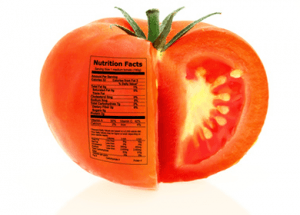
The average person has a difficult time reading and understanding food nutritional labels. Some experts believe it’s because of an “information overload,” and a lack of a clear, simple message. Another problem is the somewhat deceptive practice of companies increasing the number of servings per package to lower the number of calories that appears. Many consumers look at the number and mistakenly assume it refers to the entire contents, adding to the confusion.
 The thought of having to do math in order to figure out the calories, fat and other components of the food turns many consumers off.
The thought of having to do math in order to figure out the calories, fat and other components of the food turns many consumers off.
But here’s the surprise. You don’t have to do any complicated mathematical equations, or even a simple calculation when it comes to reading nutritional labels. All you really need to worry about is what’s INSIDE that package. What are the ingredients?
Anyone that can read can make a healthy food purchase just by looking at the ingredients. The odds are, if there is a long list and you can’t understand what they are or where they come from, it’s probably not good for you.
For example, most people think a Kellogg’s Nutri-Grain bars are an excellent quick and healthy breakfast. In fact, the package boldly states, “More of the Whole Grains Your Body Needs,” and an “Excellent Source of Calcium.” A great choice, right? Wrong.
Take a closer look at the long list of ingredients of a Strawberry Yogurt flavored bar the next time you’re in the grocery store – there are 56 of them. The ingredients are always listed by volume, meaning they are listed from the largest amounts to the smallest. The bar begins with whole grain oats – not bad. But following that you’ll find high fructose corn syrup, soybean oil, wheat gluten, soy lecithin, artificial flavorings and a myriad of other ingredients, and that’s just the outer crust. The filling lists high fructose corn syrup as the first ingredient and also includes partially hydrogenated soybean and cottonseed oil, more artificial flavors as well as caramel color and red 40 – widely used food dye that’s been said to cause a host of health problems and even behavior issues in children.
This bar is nowhere close to being healthy – at this time how many calories it contains is a moot point.
The obvious best choice is fresh foods that come from the earth – an apple or an orange is just that. There are no “hidden” or deceptive ingredients. But there are also good food choices that can come in a can or a package with a short list of healthy ingredients.
Ortega Black Beans have just three ingredients: beans, water and salt. Arrowhead Mills Crunchy Peanut Butter contains only roasted unblanched Valencia peanuts and while Amy’s Organic Chunky Vegetable doesn’t have a short list of ingredients, they are all recognizable: filtered water, organic tomatoes, organic spinach, organic carrots, organic green beans, organic corn, organic peas, organic onions, organic celery, sea salt and organic cracked black pepper.
All you really need to know about the food your eating is the ingredients in it if you hope to achieve optimal health.
Do you look at the nutritional info on labels? Do you look at the ingredients or calories first?
– The Alternative Daily

